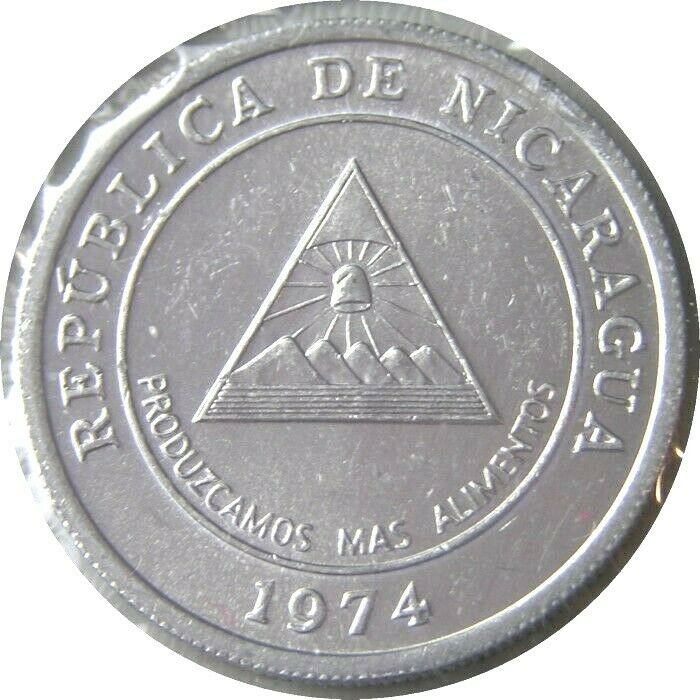-40%
Nicaragua 1929 50 Centavos NGC AU58 Iconic Sun and Rays Reverse !
$ 205.39
- Description
- Size Guide
Description
Nicaraguan Republic 50 Centavos 1929 AU58 NGC,Heaton mint, KM15.
Graded AU58,
Census [10/5] Total of 25 Graded by NGC.
Brilliant white with great luster in fields, together with an iconic sun beaming gleaming rays over five indigenous volcanos.
Combined shipping available. Please view our high resolution photos.
Nicaragua (/ˌnɪkəˈrɑːɡwə, -ˈræɡ-, -ɡjuə/; Spanish: [nikaˈɾaɣwa]), officially the Republic of Nicaragua (Spanish:
República de Nicaragua
), is the largest country in the Central American isthmus, bordered by Honduras to the northwest, the Caribbean to the east, Costa Rica to the south, and the Pacific Ocean to the southwest. Managua is the country's capital and largest city and is also the third-largest city in Central America, behind Tegucigalpa and Guatemala City. The multi-ethnic population of six million includes people of indigenous, European, African, and Asian heritage. The main language is Spanish. Indigenous tribes on the Mosquito Coast speak their own languages and English.
Originally inhabited by various indigenous cultures since ancient times, the region was conquered by the Spanish Empire in the 16th century. Nicaragua gained independence from Spain in 1821. The Mosquito Coast followed a different historical path, being colonized by the English in the 17th century and later coming under British rule. It became an autonomous territory of Nicaragua in 1860 and its northernmost part was transferred to Honduras in 1960. Since its independence, Nicaragua has undergone periods of political unrest, dictatorship, occupation and fiscal crisis, including the Nicaraguan Revolution of the 1960s and 1970s and the Contra War of the 1980s.
The mixture of cultural traditions has generated substantial diversity in folklore, cuisine, music, and literature, particularly the latter, given the literary contributions of Nicaraguan poets and writers such as Rubén Darío. Known as the "land of lakes and volcanoes", Nicaragua is also home to the Bosawás Biosphere Reserve, the second-largest rainforest of the Americas. The biological diversity, warm tropical climate and active volcanoes make Nicaragua an increasingly popular tourist destination.













